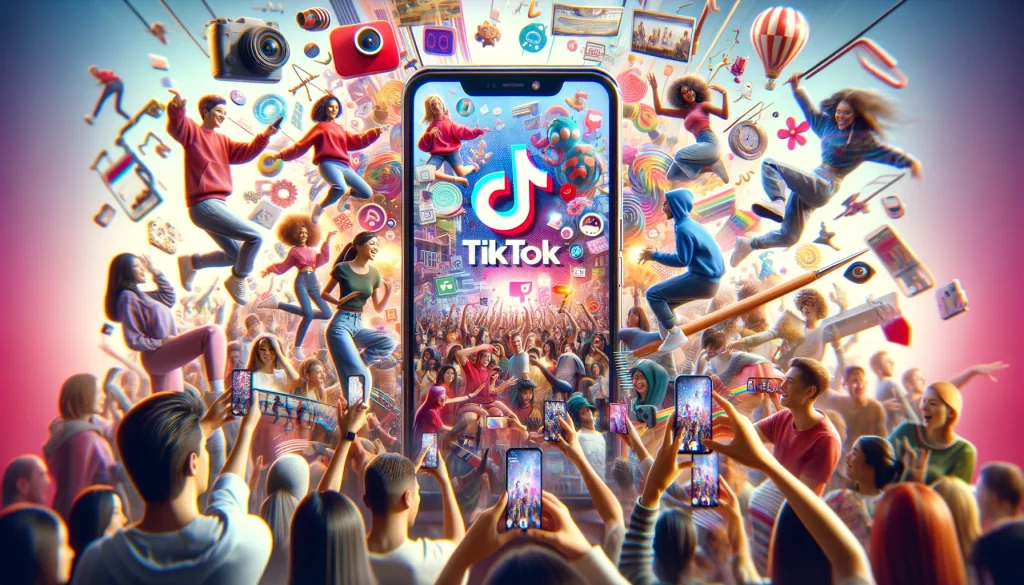No products in the cart.
In today’s digital age, social media is more than just a platform for socializing; it’s a dynamic landscape that shapes cultures, influences decisions, and transforms businesses. Here are 80 statistics that highlight the immense impact, valuable insights and reach of global social media users across the globe.
Contents
hide
General Social Media Statistics
The digital landscape is vast and constantly evolving, with social media at its heart. This section delves into the broad social media statistics that paint a picture of the global social media ecosystem. From the staggering number of users across platforms to the daily time spent on popular social media platform, these figures underscore the integral role these networks play in our lives. Understanding these general statistics provides a foundation for grasping the sheer scale and influence of social media worldwide.
- Over 4.7 billion people worldwide use social media, which is more than 59% of the global population.
- An average user spends about 2 hours and 25 minutes on social media each day.
- 98% of digital consumers are social media users.
- Social media platforms saw a year-on-year increase of more than 9% in global users.
- Facebook remains the most-used social media platform, with over 2.9 billion monthly active users.
- Instagram has over 2 billion monthly active users, showcasing its rapid growth as a leading social media platform.
- TikTok’s explosive growth has led to over 1 billion active users worldwide, making it a key platform for short-form video content.
- LinkedIn, the professional networking site, boasts over 810 million members in more than 200 countries and territories.
- 73% of marketers believe their efforts through social media marketing have been “somewhat effective” or “very effective” for their business.
- Video content is 50 times more likely to drive organic search results than plain text.
User Engagement Statistics
Engagement is the lifeblood of social media, defining the quality of user interactions and the success of content. This segment explores how users interact with content across more than half different platforms, highlighting the engagement patterns that distinguish each network. From likes and shares to the power of visual content in driving engagement, these statistics offer insights into what captivates the audience’s attention and fosters interaction in the digital social sphere.
- Facebook users “like” over 4 million posts every minute.
- Over 500 million Instagram accounts use Stories daily, making it a powerful tool for user engagement.
- Tweets with images receive 150% more retweets than tweets without images.
- LinkedIn posts with images receive 200% more engagement than text-only posts.
- Pinterest has over 478 million monthly active users, with a significant portion using the platform for purchase inspiration.
- The average engagement rate for brands on Instagram is 4.7%, significantly higher than on Facebook at 0.27%.
- TikTok’s unique algorithm has led to an average session length of 10.85 minutes, the highest among social media platforms.
- Snapchat reaches 75% of millennials and Gen Z, making it a key platform for targeting younger demographics.
- YouTube’s 2 billion logged-in monthly users watch over 1 billion hours of video each day.
- 65% of TikTok users engage with creators and participate in trends.
Social Media Users and Business Statistics
Social media has revolutionized the way businesses connect with their audience, offering unparalleled opportunities for marketing, customer engagement, and brand building. This section examines the impact of social media on businesses, including effectiveness for marketing, the reach of advertising, and the role of different social platforms in driving commerce. These statistics illustrate the critical role of social media in modern business strategies and the benefits of harnessing its potential.
- 73% of marketers believe social media marketing has been “somewhat” or “very effective” for their business.
- Instagram’s potential advertising reach is about 928 million users.
- 54% of social browsers use social media to research products.
- Facebook accounts for over 80% of all social media-driven product purchases.
- LinkedIn is the top-rated social network for lead generation.
- Brands that are active on Twitter see a 2.3x increase in customer engagement.
- 90% of Instagram users follow at least one business.
- TikTok offers a 7.7% engagement rate for accounts with more than 100K followers, outperforming other platforms.
- 85% of small businesses report gaining customers through social media.
- Customer service interactions over Twitter have increased 250% in the past two years.
Social Media Advertising Statistics
Advertising on various social media sites has become a crucial element of digital marketing strategies, leveraging the platforms’ vast user bases for targeted outreach. This part of the blog post sheds light on the dynamics of social media advertising, including spending trends, cost-per-click rates, and the advertising potential of various networks. These statistics are essential for marketers aiming to optimize their social media advertising efforts and maximize return on investment.
- Global social media ad spending reached $153 billion in 2021 and is expected to grow to over $200 billion by 2024.
- The average cost-per-click (CPC) for Facebook ads is $1.72.
- Instagram’s ads have the potential to reach 20.6% of the world’s population over age 13.
- Snapchat ads reach 75% of millennials and Gen Z in the US.
- LinkedIn ads have a click-through rate (CTR) of about 0.13% across all industries.
- TikTok’s self-serve ad platform has seen significant growth, with CPC rates averaging around $1.00.
- 70% of businesses say they use Facebook to maintain their social media presence.
- Video ads are the #1 way consumers discovered a brand they later purchased from.
- Twitter ads are 11% more effective than TV ads during live events.
- Pinterest ads have a higher average return on ad spend (ROAS) for retail brands than other social media platforms.
Demographic and Usage Statistics
Understanding the demographics and usage patterns of social media users is key to crafting effective content and strategies. This section dives into the age, gender, and geographic distribution of social media users worldwide and across platforms, as well as usage habits that define the social media experience. These insights help tailor social media initiatives to the right audience, enhancing relevance and engagement.
- 84% of people aged 18-29 use at least one social media site.
- The fastest growing demographic on Twitter is the 55–64-year age bracket.
- 68% of Instagram users are female.
- Facebook users are 53% female and 47% male.
- Snapchat reaches 90% of 13-24 year olds in the US.
- TikTok has been downloaded over 2 billion times globally.
- YouTube reaches more 18-49 year-olds than any cable network in the US.
- The average LinkedIn user spends 17 minutes on the site per month.
- Pinterest’s user base is 60% female.
- 77% of Twitter users feel more positive about a brand when their Tweet has been replied to.
Global Social Media Statistics
Social media transcends borders, connecting internet users worldwide, from every corner of the globe. This segment highlights the international aspect of social media, including the largest markets for platforms and the global penetration of these digital networks. These statistics provide a perspective on the worldwide impact of social media and its role in shaping global communication and culture.
- India has the highest number of Facebook users in the world, followed by the United States and Indonesia.
- China’s WeChat has over 1.2 billion monthly active users.
- The United States has the highest number of Instagram users, followed by India and Brazil.
- Japan’s Twitter user base is the third-largest in the world.
- South Korea’s KakaoTalk has over 52 million active users.
- The United Kingdom has over 44 million active social media users.
- Brazil has a 70% social media penetration rate among its internet users.
- Russia’s VKontakte (VK) has over 97 million active monthly users.
- The Middle East has one of the highest social media usage rates, with a 99% penetration rate in the UAE.
- Australia’s social media penetration is at 71%, with Facebook being the most popular platform.
Trending and Future Predictions
The future of social media is shaped by emerging trends and technologies that promise to redefine the digital landscape. This section explores predictions for social media marketers the future, including the rise of AI, the growth of ephemeral content, and the increasing importance of immersive experiences. These insights offer a glimpse into the evolving nature of social media and what might lie ahead.
- The use of AI in social media for personalized content creation and curation is expected to increase.
- Ephemeral content, like stories that disappear after 24 hours, will continue to grow in popularity.
- Influencer marketing is projected to grow to a $13.8 billion industry by 2022.
- Social commerce sales are expected to reach $36 billion in the US by 2024.
- Virtual reality (VR) and augmented reality (AR) will enhance social media experiences, making them more immersive.
- The adoption of blockchain technology in social media for enhanced privacy and security is on the rise.
- Video content will dominate social media, with live streaming gaining more traction.
- The use of social media for job recruitment and professional networking will increase.
- Platforms like TikTok will continue to influence music trends and cultural phenomena.
- Social media platforms will increasingly integrate with other services, such as e-commerce and streaming.
Ethical and Societal Impact
The widespread use of social media brings with it ethical considerations and societal impacts that cannot be ignored. This part of the blog post examines the challenges and implications of social media, from privacy concerns and misinformation to its influence on mental health and politics. These statistics highlight the dual-edged nature of social media, underscoring the need for responsible use of social media data and governance in the digital age.
- Concerns over data privacy and security on social media are leading to stricter regulations worldwide.
- The spread of misinformation and fake news on social media is a growing challenge.
- Social media addiction is recognized as a problem, prompting platforms to introduce features to help manage usage.
- The role of social media in mental health issues, particularly among teens, is under increasing scrutiny.
- Social media is playing a crucial role in social movements and activism.
- The impact of social media on political elections and public opinion is significant.
- Cyberbullying on social media platforms is a concern, with many seeking more effective measures to combat it.
- The digital divide highlights the inequality in social media access and impact across different socioeconomic groups.
- The environmental impact of data centers powering social media platforms is being addressed with greener technologies.
- The ethical use of AI and algorithms in shaping social media content and recommendations is being debated.
Frequently Asked Questions
Why is social media important for businesses?
Social media is crucial for businesses and marketers worldwide as it allows them to reach a vast audience, engage with customers directly, build brand awareness, and drive sales. With billions of users worldwide, social media platforms offer unparalleled opportunities for targeted advertising, customer service, and market research.
Which social media platform has the highest engagement rate?
As of the latest data, Instagram has one of the highest engagement rates among social media platforms, especially for brands. Its visual nature and features like Stories, Reels, and IGTV help businesses engage deeply with their audience.
How much time do people spend on social media daily?
On average, people spend about 2 hours and 25 minutes on social media each day. This varies by age group, region and demographic factors but highlights the significant role social media plays in daily life.
What are the fastest growing social media platforms?
TikTok has been one of the fastest-growing social media platforms recently, thanks to its unique algorithm and engaging short-form video content. Other platforms like Instagram and LinkedIn continue to see substantial growth in user base and engagement.
How effective is social media advertising?
Social media advertising is highly effective due to its ability to target specific demographics, interests, and behaviors. With detailed analytics and the ability to adjust campaigns in real-time, advertisers can achieve a high return on investment (ROI), making social media marketing strategy and it a valuable tool for businesses.
Can social media impact mental health?
Yes, social media can impact mental health. While it can offer social support and valuable information, excessive use has been linked to issues such as anxiety, depression, and loneliness. It’s important for users to manage their social media use and for platforms to support healthy social media usage statistics and patterns.
What role does social media play in politics?
Social media plays a significant role in politics by facilitating political communication, public engagement, and the spread of information. It has become a crucial tool for politicians, parties, and activists to reach voters, but it also poses challenges related to misinformation and polarization.
How is AI used in social media?
AI is used in the social networking media for personalizing content, optimizing feeds, targeted advertising, and enhancing user experiences. It helps in analyzing vast amounts of data to predict user preferences, automate responses, and detect prohibited content.
What are the ethical concerns with social media?
Ethical concerns with social media include privacy breaches, data security, the spread of misinformation and fake news, cyberbullying, and the psychological effects of social media trends, comparison and addiction. Addressing these concerns requires concerted efforts from platforms, users, and regulators.
How can businesses measure the success of their social media efforts?
Businesses can measure the success of their social media efforts through metrics such as engagement rate, reach, follower growth, website traffic referred from social media, conversion rates, and overall ROI of marketing plan. Analyzing these metrics helps in understanding the effectiveness of strategies and making informed adjustments.
Conclusion
Social media’s landscape is vast and multifaceted, reflecting the complexities of human interaction, business, and society at large. These 99 statistics offer a glimpse into the current state and emerging trends of social media worldwide, highlighting its pervasive influence and potential for future growth. As we navigate this digital era, staying informed and adaptable will be key to leveraging the power of social media for positive change and innovation.






